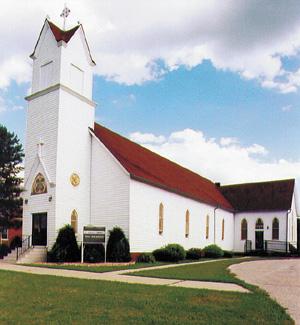
By Celine Klosterman
Decisions about a parish’s future should be made with consultation at the grassroots level, the Diocesan Planning Commission emphasized at a March 18 meeting.
The commission of 14 lay and clergy members, which met last week for the third time, is designed to help provide grassroots representation as it advises the Davenport Diocese on plans for the next 11 years. By 2020, 36 of the diocese’s 74 active priests will reach the retirement age of 70 — and with fewer than 1 1/2 priests being ordained each year, new clergy won’t make up for the losses.
Parishioners need to be aware of the diocese’s situation and make realistic recommendations about their parish’s future, several commission members stressed. Bishop Martin Amos cited the example of St. Joseph Parish in Parnell, a 75-family parish that recommended it should close and will celebrate its closing Mass in June. “It’s ideal when people can realize this needs to happen,” he said.
“This planning will affect every parish in the diocese — big and small, rural or urban,” said Marie Ware of Oskaloosa, commission co-chair. “Tough decisions will need to be made by every parish. If people aren’t willing to make tough decisions, the decisions may have to be made for them.”
The diocese counted 84 parishes in 2005. Since then, one parish has closed and two parish mergers have taken place.
In three specific situations when a priest isn’t available to celebrate Mass, diocesan policy lets parishes offer a Sunday Celebration in the Absence of a Priest. (For the full policy, visit www.davenportdiocese.org/planning). But such celebrations are to be used rarely; parishes can’t regularly offer them in an effort to stay open amid the priest shortage, Bishop Amos noted.
Nor is importing priests from other countries a primary solution, he said. “Many times, foreign priests have different concepts of theology,” he said, good-naturedly citing one foreign priest who addressed the bishop as “my lord.” Some also hold views of women that could create conflict in parishes, he said.
Msgr. John Hyland, diocesan vicar general, also noted that some other countries need priests even more than the United States does. “It’s like robbing Peter to pay Paul.”
The Davenport Diocese could seek help from dioceses with more seminarians and priests, but those dioceses’ bishops would have to be willing to let the men go, Bishop Amos noted. “Also, there are other dioceses in the United States that are in much greater need than we are. We must also have a concern for the universal church.”
Still, “Numbers aren’t the bottom line,” said Father Marty Goetz, diocesan vocations director. “You want quality numbers.”
He did touch on ways to boost vocations, though. In the Diocese of Wichita, Kan., for example, decent numbers of vocations have resulted from a generation-long effort of promoting stewardship, Fr. Goetz said. He also stressed promoting vocations in parishes.
The Davenport Diocese now has eight seminarians, and five men have voiced interest in entering the seminary next year, he said.
As the diocese works to increase vocations, it’s also trying to help current priests stay well. Priests shouldn’t regularly preside at more than three Masses a weekend, said Bishop Amos, citing guidelines from a diocesan 2004 Wellness Document for Priests. The document makes recommendations in the areas of intellectual, pastoral, spiritual, human and ministry formation. (Full guidelines are available at www.davenportdiocese.org/planning).
Msgr. Hyland said he feared parishes haven’t implemented that document, though.
The bishop also touched on a priest sabbatical policy the diocese formed a few years ago. The policy lets one priest at a time take a sabbatical for up to four months, but not many clergy have requested to do so, he said. Most recently, Father Charles Fladung went on retreat for a month in 2007.
In other discussion, the commission asked whether some of the 14 priests who now serve in non-parish ministries — such as in hospitals, prisons and diocesan administration — will keep doing so. Bishop Amos said he’s asked the presbyteral council (priests’ council) to rank the importance of having a priest in each of the non-parish ministries in which a priest now serves. But canon law requires one such ministry, diocesan vicar general, to be filled by a priest.
Msgr. Hyland noted that some priests are better suited to “special ministries” than to parish life.
In addition to the 14 priests serving outside of parishes, three diocesan priests are serving outside the diocese, and one is taking a leave of absence. Bishop Amos said he doesn’t see the latter four clergy returning to active ministry in the diocese soon.
To help priests now serving in active ministry in the diocese to deal with changing roles as lay involvement increases, diocesan staffers have been meeting with the priests on leadership and management issues for seven months, said Dan Ebener. He is diocesan stewardship director.
Bishop Amos said the diocese must continue educating lay people on similar issues, too.
The commission also discussed use of oratories — places of worship that serve a specific purpose or community, such as a non-parish church. In using such buildings, are people “splitting the community?” asked Deacon Frank Agnoli, diocesan director of liturgy. Who pays for building upkeep? And “at what point does a building become an idol? Are we fostering a healthy spirituality by keeping these buildings open?”
Later, while discussing the diocese’s changing landscape, Ware said everyone will sacrifice. “But it’s not really a sacrifice; it’s a chance for more people to be disciples.”








